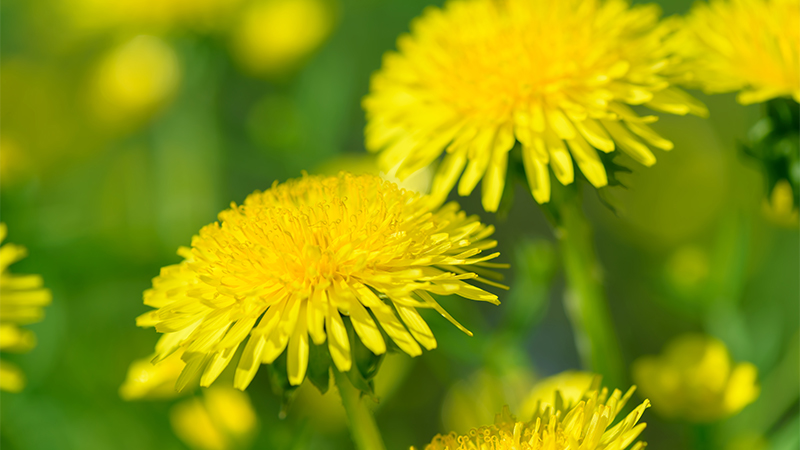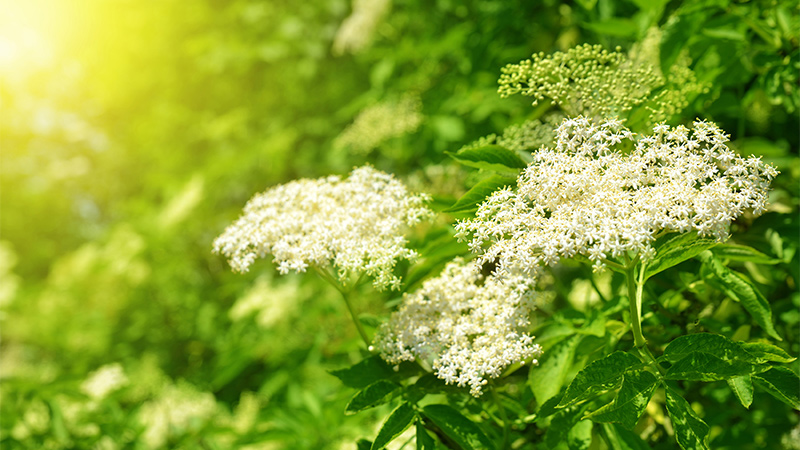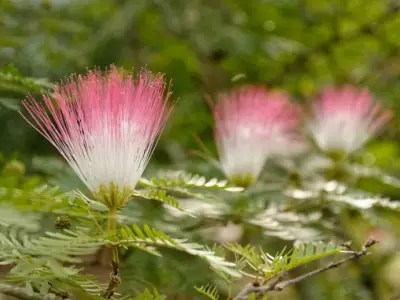Healing herbs grow all around us, whether we live in a bustling town or the heart of the rural countryside. If you're fascinated by the therapeutic power of plants, what better place to start your natural herbal remedies journey than venturing out to find the free healing herbs growing on your doorstep?
If you go out and forage for herbs, you're following in the footsteps of your ancestors, who were able to identify herbs for healing. We've been using healing plants for over 60,000 years, and until fairly recently in human history, herbs represented one of the most important forms of medicine. Although many don't realise it, herbal plants still highly influence pharmacy shelves. The pharmaceutical world turns to the plant kingdom to source useful new chemicals for medicines, and up to 40% of pharmaceutical medications are derived from plants.
What is a Healing Herb?
Look at a list of medicinal herbs; you may be surprised by the variety of plants. From rainforest fruits to common garden weeds, helpful healing herbs grow across the planet in all sorts of habitats.
You can identify herbs as any plant demonstrating a useful therapeutic or healing action. This means that the dandelions that tenaciously force their way up between the cracks in the pavement are herbs, as are the leaves of the raspberry plants at pick-your-own berry farms and the nettles that greet you with their infamous sting.
Healing herbs can produce therapeutic actions because they contain chemicals known as active constituents. The type of healing that a herb can perform depends upon the "recipe" of active constituents present within the plant. Some of the active constituents found within herbs can alter how prescribed medications are processed in the body. So, if you pick herbs from your neighbourhood to use at home, ensure they are compatible with any pharmaceuticals you take.
Learn how to identify herbs, and you can spend many happy hours in your locality, finding free natural herbal remedies that can be used to elevate your health. Invest in a good plant identification book and an app on your phone to always confirm two positive identifications before picking and using a herb.
Healing Plants in Your Garden
Weeds are the bane of the avid gardener's life, but the good news for the herbal enthusiast is that many common weeds are helpful herbs! The plants you pull from your prize vegetable patch may represent a wonderful healing herbs list.
- Cleavers – a weed covered in velcro-like hooks; cleavers are a gentle herbal remedy that supports the body's lymphatic system. Cleavers can be used to soothe a sore throat, especially when the tonsils are swollen, and they have traditionally been used to soothe skin conditions such as eczema.
- Nettles – don't forget to don a sturdy pair of gloves when picking this useful, nutrient-packed herb. Nettles are an excellent anti-inflammatory, making them a useful remedy for allergies such as hay fever and inflamed conditions of the joints or skin.
- Yarrow – a herb that likes to pop up through lush lawns; yarrow is an excellent styptic, meaning it can alleviate bleeding. Therefore, You can use it for minor cuts and grazes; some women find drinking it can reduce heavy periods. Yarrow is also handy if you have loose bowel movements, being a traditional remedy for diarrhoea.

If you grow culinary herbs in pots in your garden, many of these are also useful therapeutic herbs. Mints are superb natural herbal remedies for digestive issues that can help ease nausea and vomiting and settle bloating, griping and indigestion. Thyme is a superb anti-fungal and antiseptic remedy, while rosemary can ease headaches and sharpen mental focus when you're tired or stressed.
Not all pretty garden flowers are simply ornamental. If you grow the Calendula officinalis species of marigold in your flower beds, you have a wonderful skin-soothing and healing remedy that can help repair an inflamed, irritated gut. Coneflowers are a popular addition to the garden, but you may also know them by their other name – Echinacea. The echinacea plant's roots and flowers can stimulate the immune system's white blood cells; therefore, this herb can be used at the start of infection to help the body fight off the invading microbes. Echinacea is also a great anti-inflammatory and anti-allergy herb.
Urban Allies
Towns and cities may be home to more healing herbs than you'd think. A popular species for lining the streets, lime trees are a common sight in British towns. In early summer, lime trees (also known as Linden) bloom with sweetly fragrant flowers, and these blossoms and the bracts that attach to them are an incredibly soothing herbal remedy for stress and tension. Lime blossoms also relieve muscle tension, can soothe inflamed skin conditions and may be used at the start of a cold or flu to help steer the body through a fever.
Herbal plants that won't let a thick layer of concrete get in their way, both the roots and the leaves of dandelions can be used as a herbal remedy. The roots have a bitter taste, and this bitterness helps to promote healthy digestion by triggering the release of the enzymes that break down our food so that we can access all the nourishing nutrients within them. Dandelion leaves are known as nutritives because they're rich in vitamins and minerals. They also have a diuretic action that can help reduce puffy tissues and premenstrual fluid retention.
Favourite Strolls
Where's your favourite place to walk in your area? If it's a stroll by the river, you'll likely find clouds of fragrant meadowsweet growing in summer. The flowers and leaves of this plant are pain-relieving and anti-inflammatory. They are also astringent, meaning they tone up tissues. Meadowsweet can address headaches and musculoskeletal pain (notably when inflammation is involved). It's also an excellent digestive remedy, easing nausea, excess acid and diarrhoea.
If you love the shady tranquillity of your local woods, keep your eyes peeled for elder trees. In early summer, these come alight with elderflowers, which you can use to make a fantastic hot tea to ease symptoms at the start of common respiratory infections. These trees are laden with elderberries in autumn – an immune system-boosting remedy that can also help decongest during heavy colds.

How to Take Natural Herbal Remedies
Once you identify herbs correctly, you can take them home and turn them into natural herbal remedies. The easiest way to use your local healing herbs is to turn them into herbal teas. When you've picked fresh herbs, they have a high water content; therefore, you need to use more of them than you would if you used dried herbs. Rinse your picked herb and chop up about two dessertspoonfuls. Add this to a herbal tea ball, teapot or jug and pour on one cup's worth of freshly boiled water. Allow the herb to steep in the water for around ten minutes, then strain and enjoy your local herbal tea.
If you've picked a lot of herbs, you can dry them in a dehydrator and store them in an airtight container for up to a year. Dried herbal plants can be made into herbal tea as described above, but you only need one to two teaspoons per cup.
If you’d like to learn more, our Master Herbalist Diploma Course is currently available for just £29 for a limited time (reduced from £127).





